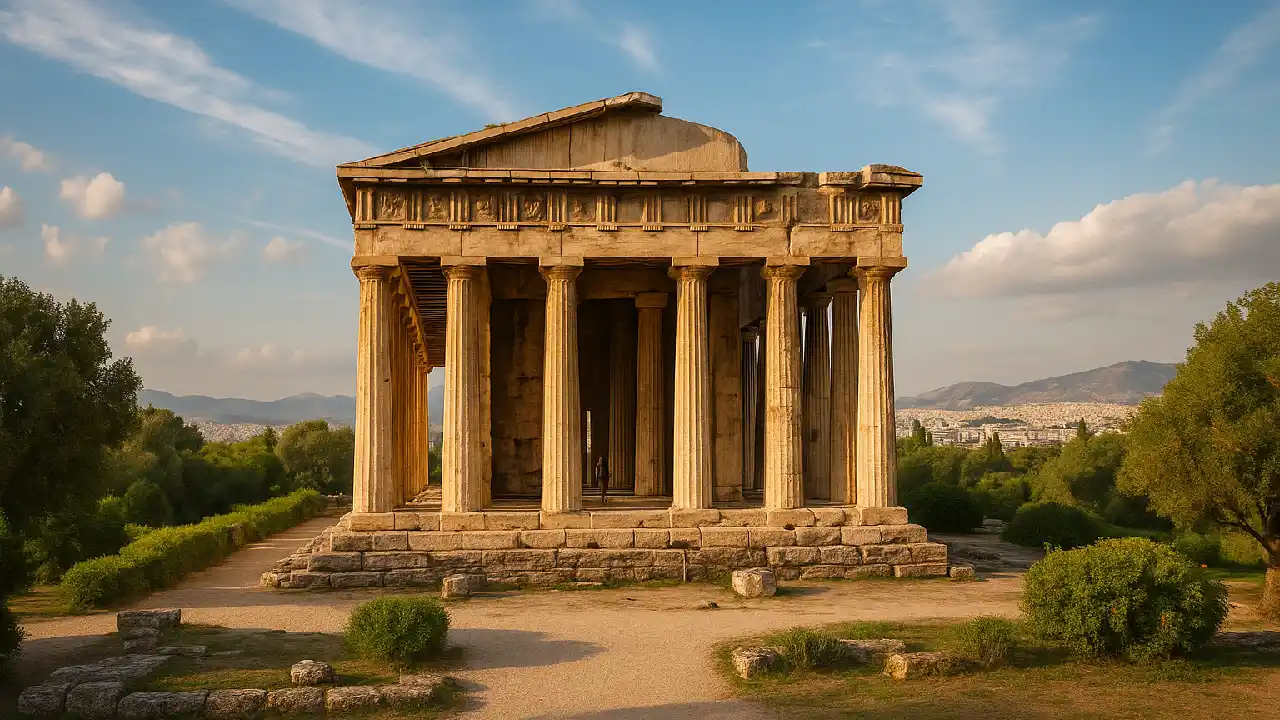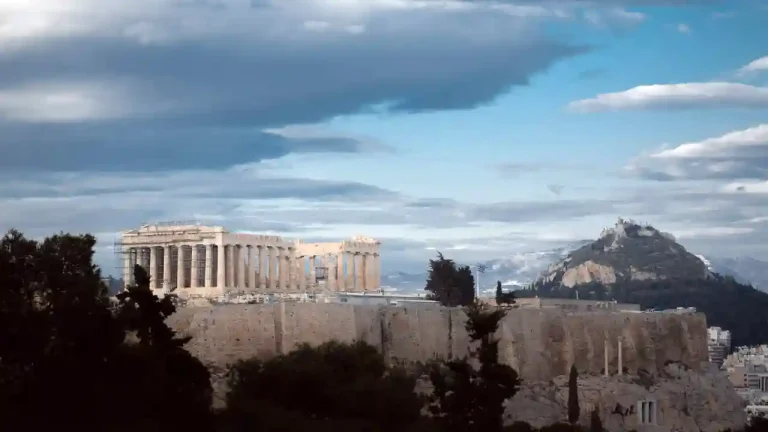Temple of Hephaestus: A Glorious Testament of Ancient Greece
Introduction to the Temple of Hephaestus
Tucked within the heart of Athens, overlooking the ancient Agora, stands one of Greece’s most remarkably preserved structures—the Temple of Hephaestus. This awe-inspiring Doric temple, often overshadowed by its neighbor, the Parthenon, is a true gem of classical architecture. Named after Hephaestus, the god of fire, metallurgy, and craftsmanship, the temple reflects the divine mastery attributed to its namesake. Its sturdy columns, elegant proportions, and storied past paint a vivid picture of a civilization that profoundly valued art, religion, and design.
Historical Significance of the Temple
A Tribute to Hephaestus and Athena
Built around 449 BCE during the height of the Athenian golden age, the temple honored both Hephaestus and Athena Ergane—the patroness of pottery and crafts. This dual dedication emphasized the city’s appreciation for skilled labor, artistry, and technology—virtues essential for a thriving democracy and culture.
Connection to the Athenian Agora
Strategically placed on a slight rise in the Agora, the Temple of Hephaestus wasn’t merely religious—it played a civic role as well. It served as a landmark for those gathering in the marketplace and as a spiritual refuge amid the city’s bustle. Its location underscores the integration of religion with daily life in ancient Athens.
Architectural Marvels of the Temple of Hephaestus
A Classic Doric Masterpiece
The temple showcases the Doric order in its purest form. It features 34 columns—6 across the front and back, and 13 along each side. Crafted from Pentelic and Parian marble, the structure maintains its symmetry and balance with mathematical precision. The fluted shafts and simple capitals evoke a sense of strength and harmony.
Sculptural Decorations and Artistic Detail
Above the columns, friezes depict heroic labors—such as the Twelve Labors of Heracles and the feats of Theseus. These carvings weren’t just decorative; they were narratives, mythological motifs meant to inspire civic pride and cultural identity. Traces of vivid pigments hint at the once-colorful nature of the temple, now faded but not forgotten.
Preservation and Endurance Over Time
From Paganism to Christianity
Unlike many other ancient structures, the Temple of Hephaestus avoided major destruction due to its later conversion into a Christian church—dedicated to Saint George Akamates. This transformation ensured continuous use and upkeep, which inadvertently preserved much of its original design.
Rediscovery and Modern Conservation
Rediscovered by archaeologists in the 19th century, the temple became a focal point for the study of Greek antiquity. Today, it stands within the archaeological site of the Ancient Agora, protected and revered, offering modern visitors a glimpse into the world of classical antiquity.
Cultural and Mythological Legacy
Symbol of Artisan Virtue
Hephaestus, as a deity, symbolized creation through labor—a divine blacksmith forging both weapons and beauty. The temple bearing his name is more than a sanctuary; it is a metaphor for human ingenuity. By honoring both Hephaestus and Athena, Athenians highlighted the unity between intellect and craftsmanship.
Inspiration for Art and Architecture
Throughout history, the Temple of Hephaestus inspired neoclassical architects, artists, and historians. Its proportional elegance and harmony served as a blueprint for Western architectural ideals, seen in courthouses, museums, and educational institutions worldwide.
Visitor Experience at the Temple of Hephaestus
What to Expect
A walk around the temple is a journey through time. Visitors can explore its sturdy colonnades, observe the preserved metopes, and take in panoramic views of the Agora and Acropolis. Unlike the often-crowded Parthenon, this temple provides a quieter, more reflective experience.
Best Time to Visit
The spring and early fall offer the most pleasant weather. Morning visits afford the best lighting for photography, while sunset bathes the marble in a golden glow, accentuating its timeless beauty.
FAQs about the Temple of Hephaestus
Where is the Temple of Hephaestus located?
It is located in the northwest corner of the Ancient Agora in Athens, Greece.
Who was the Temple of Hephaestus dedicated to?
The temple was dedicated to Hephaestus and Athena Ergane, patrons of craftsmanship and pottery.
Is the Temple of Hephaestus the best-preserved Greek temple?
Yes, it is widely considered the most intact ancient Greek temple still standing today.
Can visitors enter the Temple of Hephaestus?
Visitors cannot enter the inner chamber, but the exterior and surrounding areas are accessible.
How old is the Temple of Hephaestus?
Construction began around 449 BCE, making it over 2,400 years old.
What architectural style is the temple built in?
It’s built in the Doric style, characterized by sturdy columns and minimal ornamentation.
Conclusion
The Temple of Hephaestus remains one of the crowning achievements of ancient Greek architecture. A monument to the enduring power of craftsmanship and culture, it connects us to a world where art and belief intertwined with civic life. Whether you’re a historian, architect, traveler, or casual explorer, this temple offers something unforgettable—a silent yet eloquent testament to human creativity and devotion.
Outbound Links:
- Ancient Agora of Athens – E-Tickets
- UNESCO: World Heritage and Greek Monuments
- Greece Tourism Official Site








